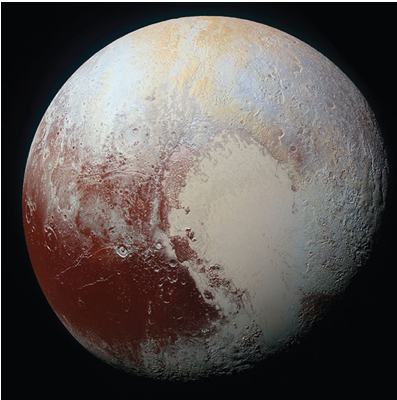Admission CTAs
Celebrating Five Years Since NASA’s New Horizons Reached Pluto
July marked the fifth anniversary of NASA’s New Horizons flyby of Pluto, the most distant object ever visited by spacecraft.
composition, ranging from bright nitrogen ice glaciers to dark
carbon-rich plains. Courtesy NASA/New Horizons.
NASA accomplished its goal to visit all traditional nine planets of the solar system with robotic spacecraft – an effort that began in the early 1960s with the early Mariner spacecraft visits to Mars. New Horizons helped humanity complete its first reconnaissance of the solar system – our “backyard in space.”
And Pluto is not just any planet. It is a new type of planet that had not been previously visited. Pluto resides in the far outer reaches of our solar system, with an elongated orbit such that its distance from the sun varies from about 30 to 49 times the distance from the sun to the Earth. Scientists had some expectations for what New Horizons would find when it reached Pluto, but were surprised to find a world of such rich complexity.
Scientists discovered that far from being cold and dead, Pluto was a vibrant world with migrating glaciers, active geology, ice volcanoes, intricate weather, complex climate cycles, and many other new and astonishing features that were total surprises to planetary scientists.
Pluto is a world with complex organic compounds, interior liquid water, and a not yet understood energy source that powers its geology. Pluto possesses carbon, water, and energy – all the essential ingredients students learn in elementary school are required for life. Pluto has biological potential, and perhaps even some type of biology in its interior. However, scientist continue to try and understand the many observations made during the Pluto flyby, and those studies will likely continue for many more years.
Michael E. Summers is a Professor of Planetary Science and Astronomy in the Department of Physics and Astronomy at George Mason University.

